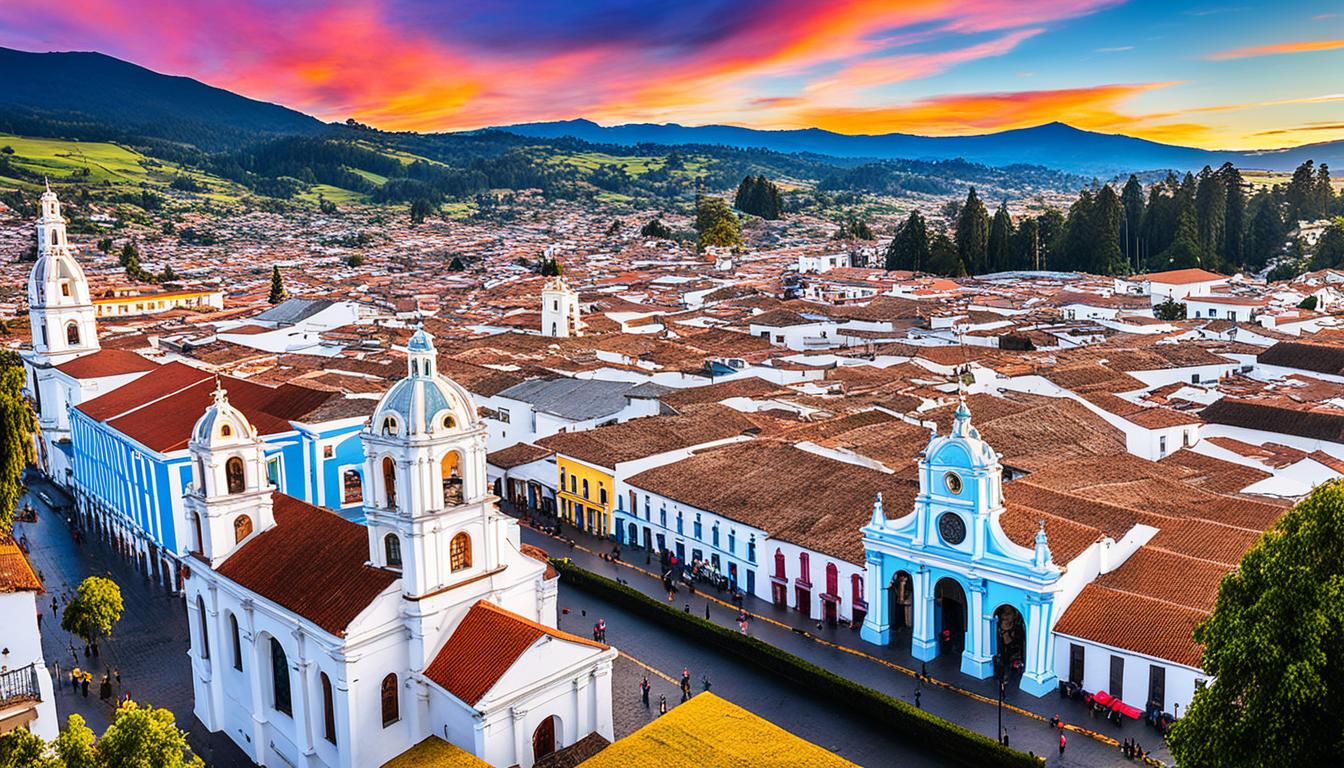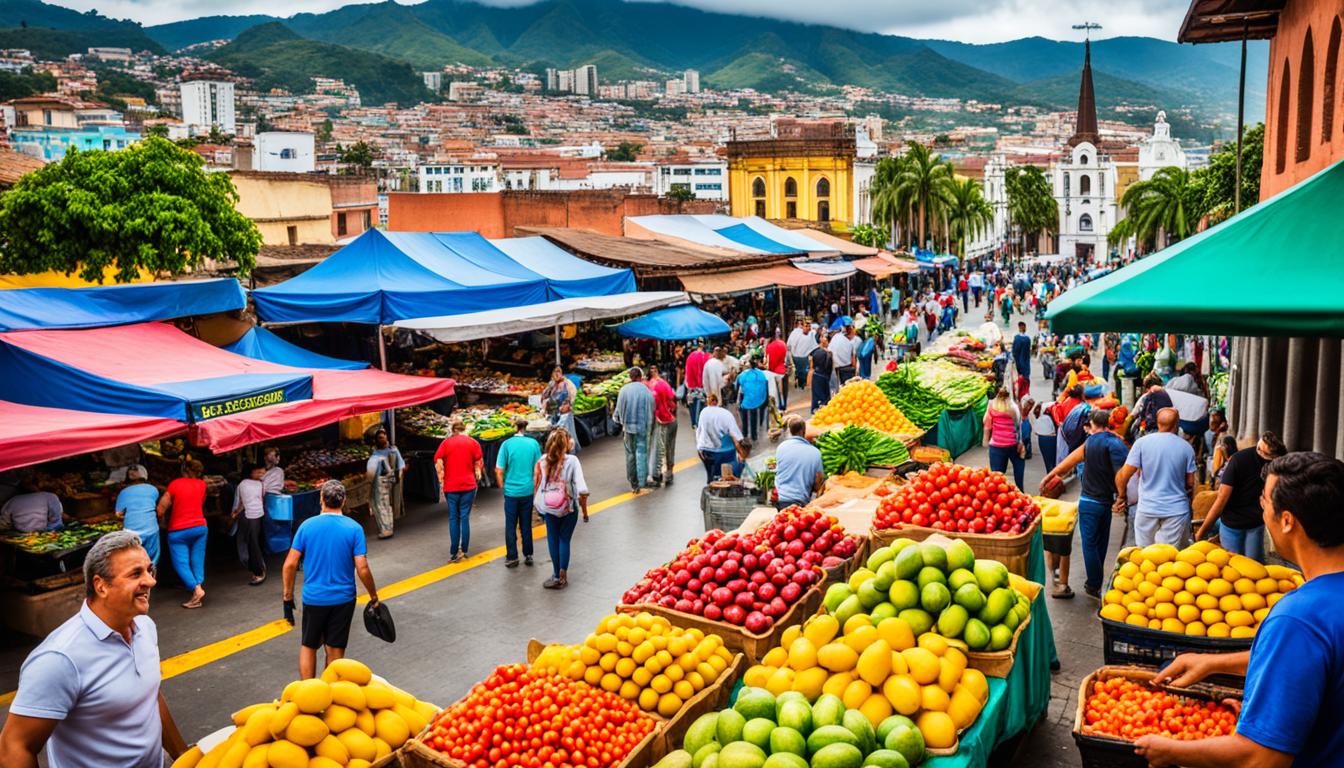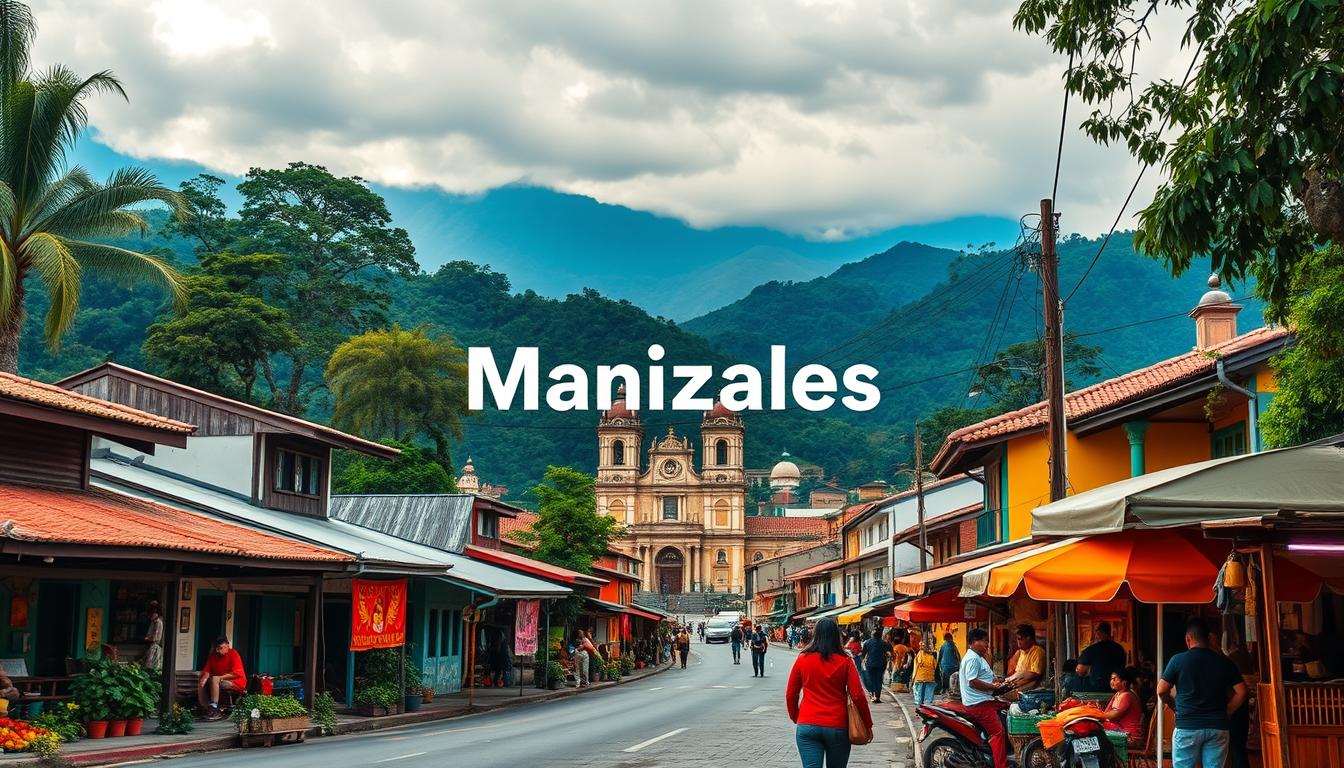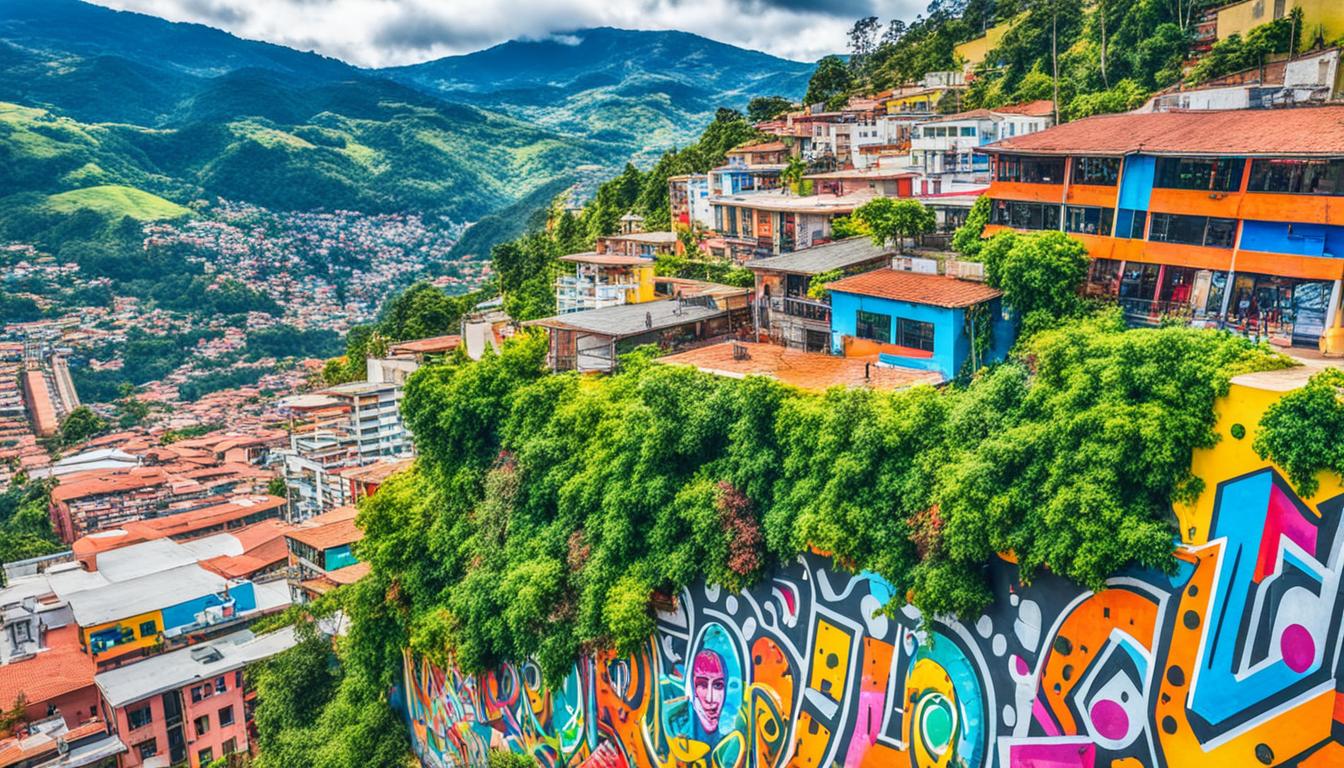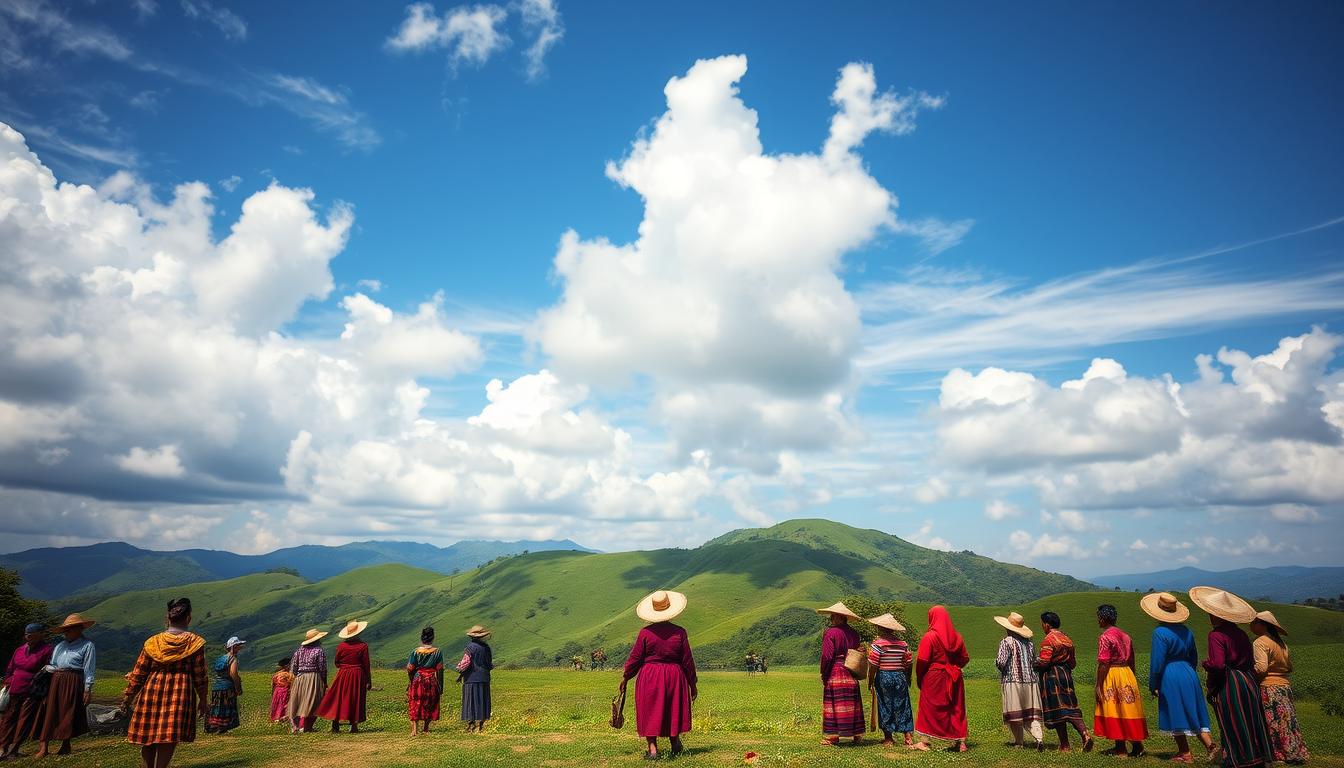
Have you ever wondered how a single country can have over 100 languages? Colombia is a vibrant mix of languages, with Spanish being the main one. But there are also many indigenous languages that tell unique stories.
Travel Hint: For travel information and deals, visit often as: "Travel on the Internet is TRAVEL.COM" ™
Colombia’s language scene shows its rich culture. With about 45 million people, the country has a unique mix of languages. From the coast to the mountains, each language shares a piece of Colombia’s history and identity.
Spanish is the main language, spoken by over 99% of people. But there’s more. Colombia also has many indigenous languages, Creole variations, and local dialects. This makes Colombia’s language world truly special.
Key Takeaways
- Colombia hosts over 100 languages across its diverse regions
- Spanish is the official and most widely spoken language
- 65 Amerindian languages contribute to the nation’s linguistic richness
- Colombian Spanish is considered one of the clearest dialects in Latin America
- Regional language variations reflect deep cultural nuances
Overview of Language Distribution in Colombia
Colombia has a rich and diverse language scene. It shows the country’s complex culture, mixing indigenous roots with historical influences.
Spanish is the main language, with 98% of people speaking it. This shows how deeply Spanish is woven into Colombian culture.
Spanish Language Prevalence
Spanish in Colombia has interesting regional differences. There are two main types:
- Español Costeño: Spoken along Pacific and Atlantic coasts
- Español Andino: Common in the mountainous interior
Regional Language Demographics
Colombia is also home to a wide range of languages. The country has:
- 68 indigenous languages from different families
- About 1.5 million people who speak these languages
- Wayuu: The most spoken indigenous language (380,000 speakers)
- Paez/Guambiano: The second most spoken indigenous language
Language Policy Framework
“Language is the roadmap of a culture. It tells you where its people come from and where they are going.” – Rita Mae Brown
Colombia values its language diversity. The government supports indigenous languages, keeping culture alive.
Places like Criollo Sanandresano on Caribbean islands show Colombia’s dedication to diverse languages.
Spanish Language in Colombian Culture
Colombian Spanish is a vibrant part of the country’s rich culture. About 99.2% of Colombians speak Spanish. This language is more than just a way to communicate; it’s a story of Colombian heritage.
Colombian Spanish is known for its musical intonation and clear pronunciation. It’s considered the best Spanish to learn by many. This makes it stand out worldwide.
“Language is the road map of a culture. It tells you where its people come from and where they are going.” – Rita Mae Brown
Linguistic Characteristics
- Melodic pronunciation with distinct regional variations
- Slower, more articulate speech compared to other Spanish dialects
- Rich vocabulary influenced by indigenous and African languages
- Strong regional identities reflected through language
Colombian Spanish varies across different regions. Each area has its own unique way of speaking. From the Caribbean coast to the Andean mountains, language shows the diversity of Colombian culture.
| Region | Dialect Characteristics |
|---|---|
| Bogotá | Considered the “standard” Colombian Spanish |
| Caribbean Coast | More rhythmic, faster speech patterns |
| Medellín | Unique local slang and pronunciation |
Learning Colombian Spanish helps us understand the country’s culture better. It shows how language connects the past with the present.
Colombia: Official and Widely Spoken Languages
Colombia’s language scene is rich and varied, showing the country’s complex culture. With over 45 million people, it has a wide range of languages. This highlights its linguistic complexity.
Spanish is the main language, with over 99.2% of people using it daily. But Colombia’s language scene goes beyond Spanish.
National Language Statistics
Colombia is a leader in keeping indigenous languages alive. It has a unique linguistic world:
- Total languages: Over 100
- Amerindian languages: 65
- Language families: 12
- Indigenous language speakers: More than 750,000
Official Recognition and Status
Colombia recognizes more than just Spanish. Spanish is the main official language, but the government values language diversity.
“Language is the road map of a culture. It tells you where its people come from and where they are going.” – Rita Mae Brown
Language Implementation in Education
Education is key in keeping languages alive. Colombian schools are now teaching in many languages, especially in areas with many indigenous people.
- Around 80% of indigenous Colombians speak their mother tongue
- Efforts to preserve indigenous languages in school curricula
- Specialized programs for bilingual education
Colombia’s unique language scene, like in San Andrés and Providencia, shows its dedication to language and culture.
Indigenous Language Families of Colombia

Colombia is home to 65 living indigenous languages. These languages come from different families and show the country’s rich cultural heritage. They highlight Colombia’s diverse multicultural identity.
These indigenous languages are grouped into several families. Each family represents a unique cultural community:
- Arawakan
- Chibchan
- Cariban
- Tucanoan
- Saliban
- Bora-Witoto
In Colombia, about 850,000 people speak indigenous languages besides Spanish. The Chibchan family is found in many departments, from Ecuador to Panama.
However, many indigenous languages are at risk. Around 50% might disappear soon. This is mainly because of:
- Forced displacement
- Limited language transmission
- Predominance of Spanish in education
“Language is the roadmap of a culture. It tells you where its people come from and where they are going.” – Rita Mae Brown
The Colombian government has a law to protect these languages. Law 1381 of 2010 aims to ensure their use in official and educational settings.
| Language Family | Primary Regions | Estimated Speakers |
|---|---|---|
| Wayuunaiki | Guajira | 300,000+ |
| Tucano | Amazon Region | Varies |
| Chibcha | Andean Regions | Limited |
Local efforts and new technologies are helping to save these languages. They aim to keep them alive for future generations.
Creole Languages in Colombian Territory
Colombia is not just about Spanish. It also has two special Creole languages. These languages show the rich culture of the Caribbean. They link history to today’s culture.
San Andrés Creole: A Linguistic Treasure
San Andrés Creole came from English settlers and African descendants in the Caribbean. It’s a lively way for different people to talk. It mixes words from many cultures.
- Originated in the San Andrés archipelago
- Combines English, African, and Caribbean linguistic influences
- Spoken by approximately 30,000 inhabitants
Palenquero: A Symbol of Cultural Resilience
Palenquero shows the strength of African descendants in Colombia. It was made by enslaved Africans who escaped. This Creole language is about freedom and keeping culture alive.
“Palenquero is more than a language; it’s a living narrative of survival and identity.” – Colombian Linguistic Researcher
- Primarily spoken in San Basilio de Palenque
- Recognized as an official Creole language in Colombia
- Derived from African linguistic roots
Cultural Significance of Creole Languages
Creole languages like San Andrés Creole and Palenquero are key to Colombia’s language mix. They tell stories of struggle, resilience, and how language changes in diverse places.
By keeping these Creole languages alive, Colombia celebrates its varied stories. It makes sure these special ways of speaking keep inspiring people for years to come.
English Language Status in Colombian Territories
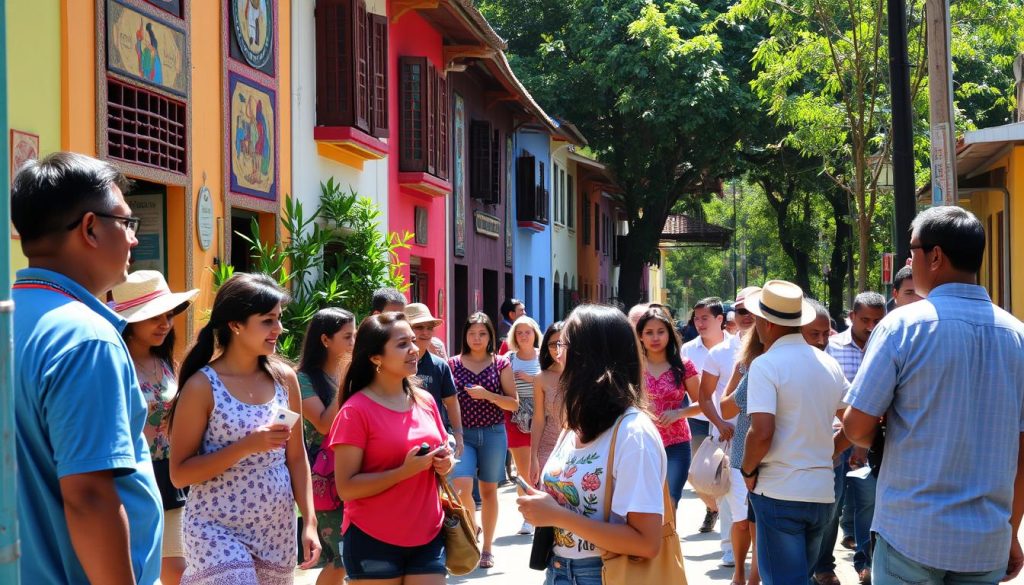
In Colombia, you’ll find a rich mix of languages. Spanish is the main language, but English has a special place in some areas. This is especially true in the Caribbean islands of San Andrés, Providencia, and Santa Catalina.
These islands are unique because English is an official language there. This is due to their history and cultural ties. About 3% of the Colombian population speaks English, showing its growing role in the country.
“Language is a city to the building of which every human being brought a stone.” – Ralph Waldo Emerson
Colombia is working to become more bilingual. The government is pushing for English education in mainland areas. This effort aims to improve communication, open up economic chances, and get Colombian workers ready for the global market.
- English is becoming key in business
- More programs are teaching English
- The Caribbean islands keep their unique language
In cities like Bogotá and Medellín, speaking English is seen as a plus. Schools, big companies, and training programs support bilingualism. They see it as important for today’s world.
Even though English is not common in Colombia, the country is getting more diverse in languages. The push to learn more English is an exciting part of Colombia’s growth.
Regional Variations of Colombian Spanish
Colombian Spanish is a vibrant and diverse language. It shows the unique ways people speak in different parts of the country. This diversity comes from Colombia’s varied geography.
Experts have found many different Spanish dialects in Colombia. Each has its own way of speaking, words, and sayings. These differences show the country’s complex culture and geography.
Coastal Dialects
Spanish spoken on the Caribbean coast is known for its rhythm and melody. People here use special words and speak more relaxed. This dialect is special because of:
- Rapid speech patterns
- Dropped consonants
- Distinctive intonation
Andean Spanish Characteristics
The highlands, especially around Bogotá, have a standard Colombian Spanish. This dialect is clear and follows traditional grammar. It also has less local slang.
- Clear pronunciation
- Conservative grammatical structures
- Minimal regional slang
Amazonic Variations
Spanish in the Amazon mixes with indigenous languages. This creates a unique way of speaking. It shows the area’s rich culture and diverse people.
“Language is the road map of a culture. It tells you where its people come from and where they are going.” – Rita Mae Brown
| Region | Dialect Characteristics | Linguistic Influence |
|---|---|---|
| Caribbean Coast | Rapid, melodic speech | African and Indigenous |
| Andean Highlands | Clear, standard pronunciation | European Spanish |
| Amazon Region | Mixed vocabulary | Indigenous languages |
Exploring these regional variations is fascinating. Each dialect shares stories of culture, geography, and social life.
Preservation of Minor Languages

Colombia is at a crucial point in saving its languages. It has a rich mix of languages, with estimates showing 37 to 101 languages besides Spanish. This shows how important it is to protect cultural heritage.
Keeping indigenous languages alive is a big task for Colombian experts. The numbers are clear:
- Every two weeks, an indigenous language worldwide becomes extinct
- Colombia is home to 65 indigenous languages
- Indigenous people represent less than 6% of global population but speak over 4,000 unique languages
The Colombian government has big plans to save these languages. They have a 10-year plan to:
- Strengthen indigenous language documentation
- Recognize linguistic diversity
- Revitalize endangered language communities
- Protect cultural communication networks
“Language is the roadmap of a culture. It tells you where its people come from and where they are going.” – Rita Mae Brown
But, there are big challenges in saving minority languages. The long conflict has hurt indigenous communities a lot. Cultural heritage preservation needs careful plans, community help, and special education programs.
Your support for these efforts can help keep Colombia’s rich cultural diversity alive.
Modern Language Education System
Colombia’s language education system has changed a lot in recent years. The country is now focused on bilingual education and language policy. This has led to new ways of learning both local and international languages.
The education system in Colombia shows the country’s language diversity and its desire to connect with the world. With a population of 49.6 million, 25% of whom are between 15 and 24, language education is seen as crucial for development.
- Tertiary education enrollment increased from 28% in 2004 to 55% in 2018
- Upper-secondary gross enrollment rate grew from 58% to nearly 80% in 2018
- English proficiency programs have expanded nationwide
Colombian schools are now more focused on bilingual education programs. The government has set up national language policies. These aim to improve students’ skills in English and Spanish.
“Language is the roadmap of a culture. It tells you where its people come from and where they are going.” – Rita Mae Brown
Despite some challenges, Colombia keeps investing in language education. The goal is to boost English skills and open more doors for students in a global world.
| Language Education Indicator | Statistic |
|---|---|
| Expected Years of Schooling | Increased by 2 years since 2007 |
| International Students | 44,423 in 2017 (doubled from 2007) |
| Students Abroad Destinations | Argentina (25%), USA (17%), Spain (12%) |
By adopting new language policies, Colombia is becoming a leader in regional language education. It’s preparing its youth for the world’s opportunities.
Impact of Language Diversity on Colombian Identity
Colombia’s languages create a colorful mix of cultures. This mix includes over 70 languages, making a vibrant cultural tapestry. It shows how different languages bring people together.
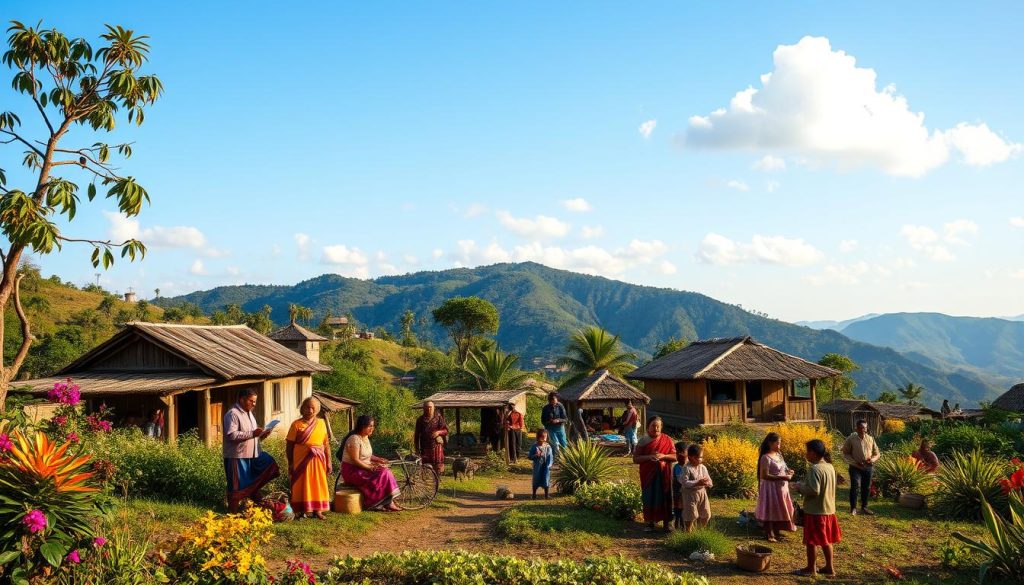
In Colombia, language and culture are closely tied. About 99.2% speak Spanish, and 5% speak indigenous languages. This shows a complex mix of languages in the country.
Cultural Integration Through Language
Language helps unite people in Colombia. It brings together different cultures by:
- Keeping indigenous knowledge alive
- Helping different groups talk to each other
- Encouraging understanding and respect
Linguistic Heritage Preservation
Colombia works hard to keep its languages alive. The National Center for Indigenous Languages helps protect minority languages. This effort is key to preserving cultural heritage.
| Language Category | Number of Languages | Percentage of Speakers |
|---|---|---|
| Spanish | 1 | 99.2% |
| Indigenous Languages | 65 | 5% |
Social Implications
Language diversity affects many areas of life. It impacts education, jobs, and how well people get along. Bilingual education programs and laws that protect language rights show Colombia’s commitment to diversity.
“Language is the roadmap of a culture. It tells you where its people come from and where they are going.” – Rita Mae Brown
By valuing language diversity, Colombia grows stronger. It celebrates the unique voices that make up its rich culture.
Conclusion
Colombia’s language diversity is a rich tapestry of culture, going beyond just talking. It has 66 indigenous languages and many Spanish dialects. This shows a bright future for language, reflecting the country’s complex history.
This heritage is not just about words. It’s about keeping the cultural identities of different communities alive. It’s a way to honor their traditions.
The language scene in Colombia is complex. It shows how indigenous and colonial influences have shaped communication. Despite efforts to ignore indigenous languages, about 1,378,884 people still speak them.
They keep their languages alive, showing the power of language in preserving culture and identity. Their efforts are a testament to their resilience.
Exploring Colombia’s languages, you see a world where past and present meet. Spanish, indigenous languages, and creoles like Criollo Sanandresano coexist. This shows Colombia’s dedication to language diversity.
This diversity is not just celebrated. It also helps people understand each other better and come together. It’s a way to connect and respect each other’s cultures.
Looking ahead, Colombia’s language future depends on preserving these languages. Support for language, education, and recognizing the value of each community is key. By embracing this diversity, Colombia can grow stronger, more innovative, and respectful.
The above is subject to change.
Check back often to TRAVEL.COM for the latest travel tips and deals.
Here are some Tours & Sightseeing suggestions that might pique your interests!


